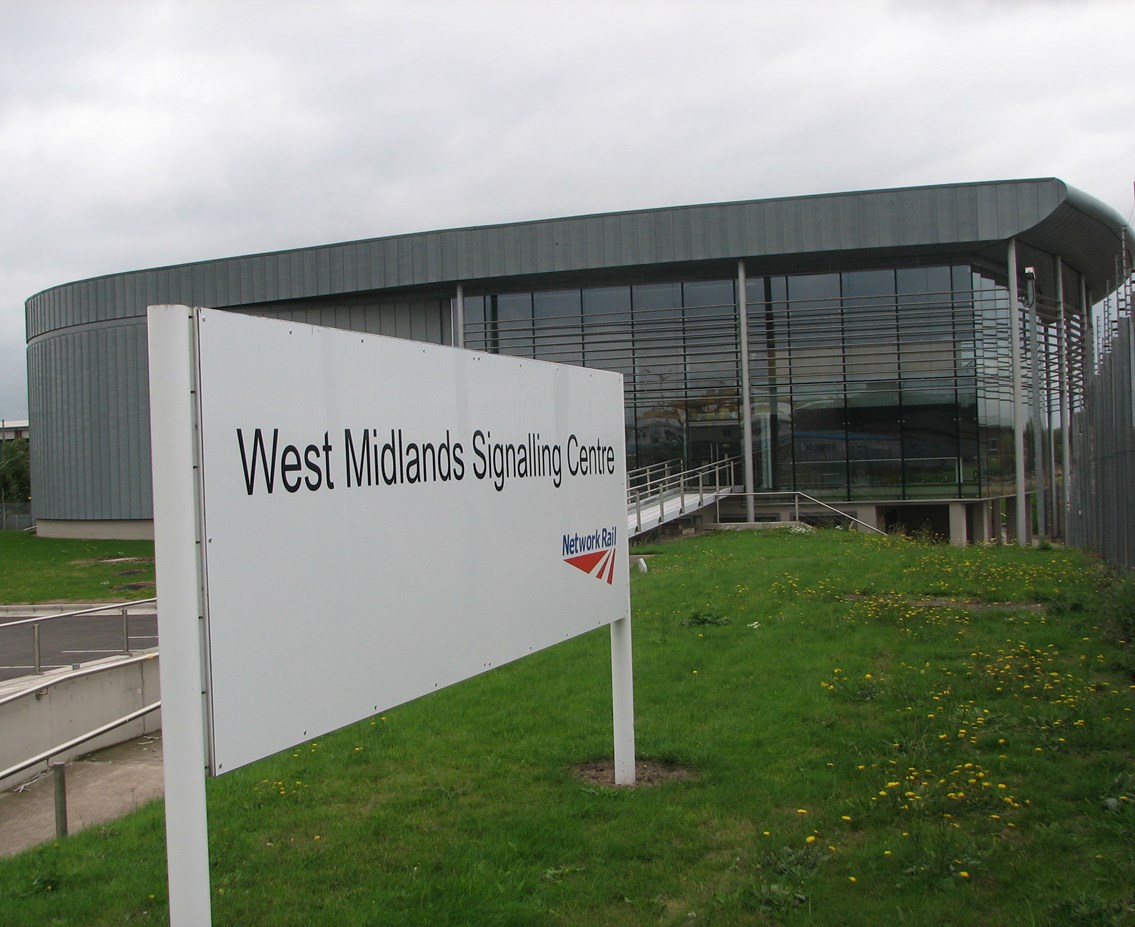Wednesday 11 Oct 2006
£350 MILLION INVESTMENT IN SIGNALLING GETS UNDERWAY
- Region & Route:
Network Rail’s plans to invest £350 million in a major signalling scheme in the West Midlands took a major step forward today with the award of a multi million pound signalling ‘framework’ agreement for the region.
The new signalling systems, which will replace equipment dating back to the 1960’s, will deliver substantial benefits for passengers and freight users across the West Midlands, increasing reliability and reducing delays. Operations will be controlled from a new state-of-the-art signalling centre at Saltley in Birmingham. Network Rail Route Director, Peter Strachan said: “This is great news for millions of passengers across the West Midlands who will find their journeys significantly improved. Investment on this scale will reduce delays by improving the reliability of the railway and provide a long-term benefit of a better rail network in the region.” “Delivering efficiently, with the right supplier is hugely important. We have made long-term commitments to suppliers, giving them the opportunity to invest in the development of technology. In return, we have received long-term cost guarantees, helping us to achieve our cost targets.” The first stage of the project will see Network Rail renewing the signalling along the 23 mile ‘Leamington Corridor’ route between Birmingham Moor Street, Solihull and Warwick Parkway. As part of the project, the track layout at Tyseley will be upgraded to increase capacity. Upgrading the track at the same time as the signalling will maximise use of the access to the railway and minimise disruption for passengers. The Leamington Corridor project is set to be complete by the end of February 2008.
Notes to editors
Estimated values for works in the first three years of the framework agreement are as follows: West Midlands Westinghouse Rail Systems £105m The ‘framework’ status means that there are no guaranteed work levels. The investment plans over the next five to eight years will see £350 million invested in the West Midlands; following the completion of the Leamington Corridor in February 2008, further phases of the West Midlands scheme include: Water Orton 2010 Walsall 2011 Wolverhampton 2012 New Street 2014 As each phase is completed, signalling operations for that area will move into the West Midlands Signalling Centre at Saltley. When completed in 2014, combined with other signalling renewals in the region (i.e. Coventry and Droitwich) the proposed area of control will include 415 route miles replacing up to 38 signal boxes. The Leamington Corridor project will see 138 new signals installed along 23 miles of track between Birmingham Moor Street and Warwick Parkway. The junction at Tyseley where the Stratford-upon-Avon branch meets the Solihull line currently restricts trains to 20mph. It’s also a bottleneck, delaying trains and restricting timetables. The new junction will increase the line speed to 60mph, reducing delays and freeing up capacity on this increasingly busy line. Network Rail’s ‘initial strategic business plan’, signals the beginning of a two year process to determine the needs of the UK’s railway network in the five year funding period - 1 April 2009 to 31 March 2014. The submission is made to the Office of Rail Regulation and then involves an iterative process between Network Rail, the Office of Rail Regulation (ORR) the Department for Transport (DfT) and Transport Scotland that looks to determine how much money Network Rail will receive to operate, maintain, renew and enhance the nation’s rail infrastructure in what’s called ‘Control Period 4’ (CP4) - April 2009 to March 2014
Contact information
Passengers / community members
Network Rail national helpline
03457 11 41 41
Latest travel advice
Please visit National Rail Enquiries
Journalists
Network Rail press office - North West & Central Region
0330 854 0100
NWCmediarelations@networkrail.co.uk
About Network Rail
We own, operate and develop Britain's railway infrastructure; that's 20,000 miles of track, 30,000 bridges, tunnels and viaducts and the thousands of signals, level crossings and stations. We run 20 of the UK's largest stations while all the others, over 2,500, are run by the country's train operating companies.
Usually, there are almost five million journeys made in the UK and over 600 freight trains run on the network. People depend on Britain's railway for their daily commute, to visit friends and loved ones and to get them home safe every day. Our role is to deliver a safe and reliable railway, so we carefully manage and deliver thousands of projects every year that form part of the multi-billion pound Railway Upgrade Plan, to grow and expand the nation's railway network to respond to the tremendous growth and demand the railway has experienced - a doubling of passenger journeys over the past 20 years.
Follow us on Twitter: @networkrail
Visit our online newsroom: www.networkrailmediacentre.co.uk

